Last Updated on 24.10.2025 by hrushetskyy
To answer your question “Why are my back tires cupping?” UTires has created a guide covering the causes and prevention measures of this dangerous wear pattern.
Back Tire Cupping 2024 Guide: Causes, Prevention, and Fixes
What is tire cupping?
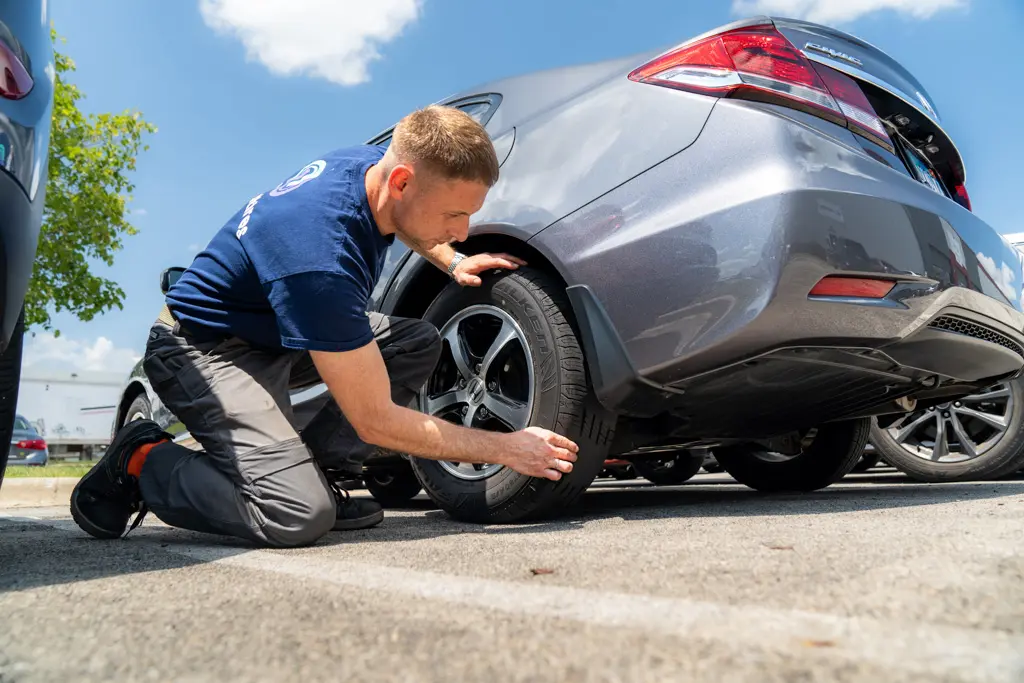
Tire cupping is a dangerous tread wear pattern mostly caused by improper tire maintenance or its physical damage. The tread appears as though it has been scooped out at regular intervals, creating a series of high and low spots that can be both seen and felt when running a hand over the tire’s surface. The scoops are 3-4 inches long and can be found along the edges or across the entire tread area. Cupped tires result in a grinding noise that becomes more distinct as the speed increases. Tire scalloping compromises the smoothness of your drive and can also signal deeper issues with your car’s alignment, suspension, or wheel balance.
6 signs of tire cupping
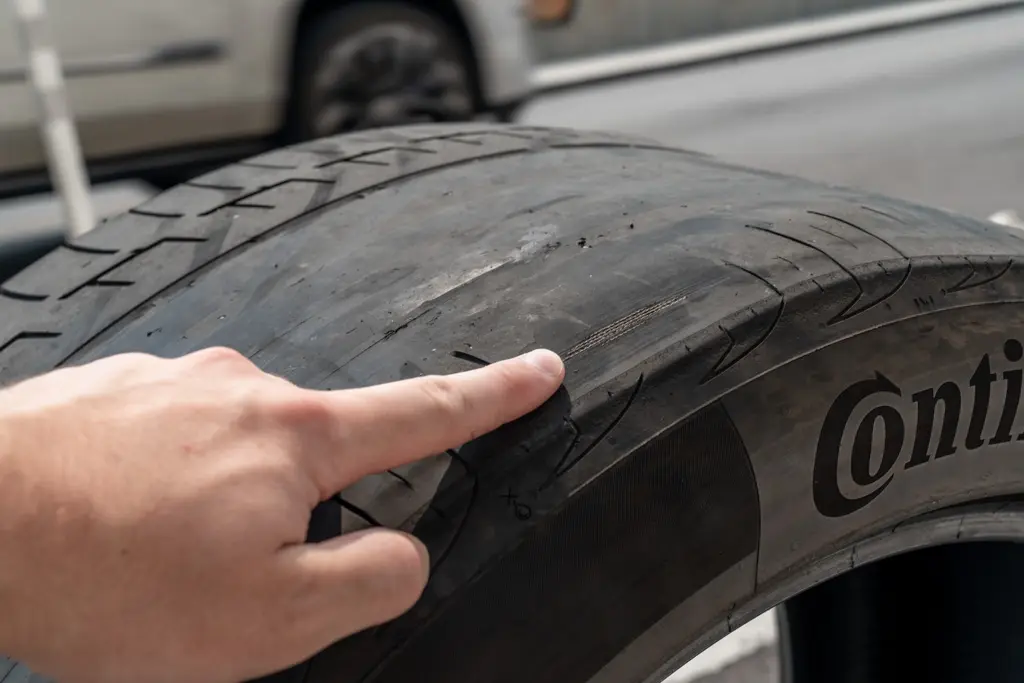
- Scalloped treadwear pattern: You may notice a distinctive wear pattern on the tires that resembles scooped-out spots or dips along the tire’s tread. These spots may occur in intervals across the tire.
- Noise: Cupped tires can produce a growling or grinding noise, typically increasing as the vehicle’s speed increases.
- Vibration: The vehicle may have vibrations or wobbly behavior due to the uneven contact with the road caused by the cupping. This is more noticeable when hitting road obstacles.
- Uneven tread: By physically inspecting the tire’s tread with your hand, you can feel for any uneven surfaces or wave-like patterns that may not be initially visible.
- Bouncing: Perform a bouncing test by pressing down the car’s hood and releasing it. Observe if the car continues to bounce after you have stopped applying pressure. Persistent bouncing could indicate issues with the suspension or struts, which can lead to cupping.
- Leaning to one side: You might notice the car leaning excessively to one side during turns or pulling to one side while driving, which can suggest an imbalance that may cause cupping.
Address the signs of tire cupping ASAP! Regular tire maintenance and inspections will help prevent this issue.
What causes the cupping on the rear tires?
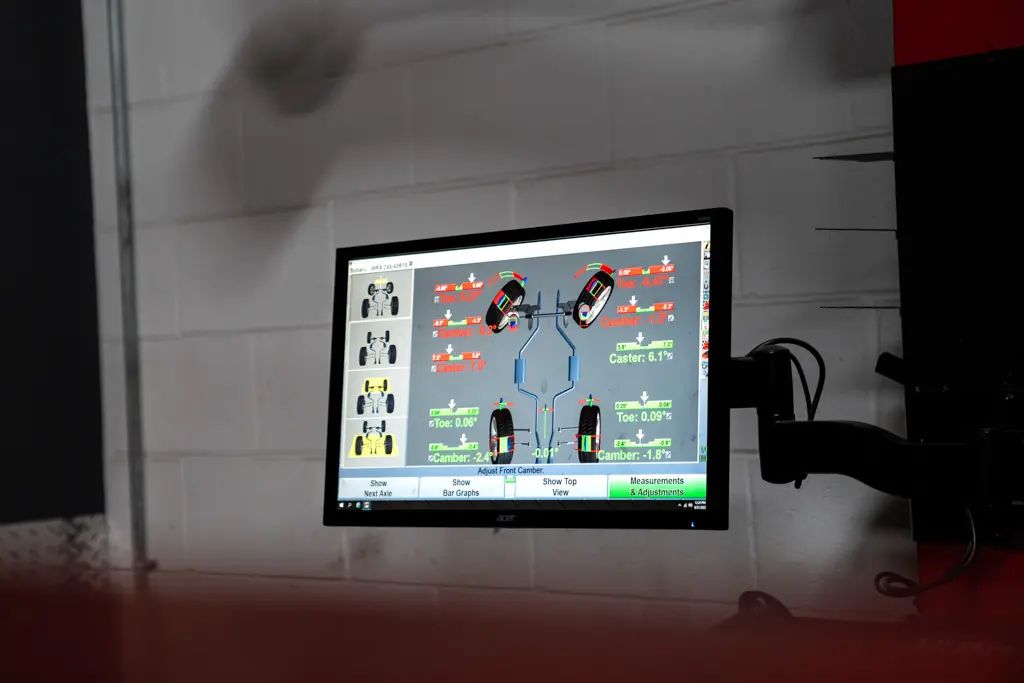
1. Misaligned tires
Misaligned wheels are not perpendicular to the road or parallel to each other. This leads to uneven pressure distribution on the tires, which can cause irregular wear patterns and cupping. Wheel alignment is a three-setting process for your wheels to be parallel to each other and perpendicular to the road.
The three angles are:
Camber
Camber is the angle responsible for the wheels’ perfectly vertical alignment to the surface. When they are perpendicular to the road, the camber setting is “0.” If it’s positive or negative, suspension parts may wear out prematurely.
Toe
The toe is the angle between the wheels that is responsible for them being parallel to each other. This setting is the most important for even wear, as if it’s in or out, the rubber will scrub off the tires, causing back tire cupping. Toe misalignment of only 0.17 inches drags the tire to the sides for about 68 miles per year.
Caster
The caster is the angle between the steering axis and the road. It must be “0” to ensure safe driving and no uneven wear. If the setting is positive or negative, the vehicle will become difficult to turn, and its straight-line stability will suffer.
If even one set is slightly out of alignment on the rear wheels of a front-wheel drive car, the tread will cup. Back tire cupping also occurs when the front and rear tires aren’t parallel to each other or if the toe angles are misaligned. In this case, wear will be diagonal around the whole tread.
You should check the alignment when new tires or suspension components are installed. In fact, a routine check should be done every six months or at least once a year (12,000 miles). Correct alignment may be compromised when you hit a pothole or curb, so if you experience anything like this, be sure to check the alignment.
Aside from back tire cupping and other uneven wear patterns, misalignment may cause other issues:
-
- Steering wheel tilting to one side
-
- Degrading of the steering wheel’s returning ability
-
- Vehicle pulling to one side while driving.
2. Tire imbalance or runout
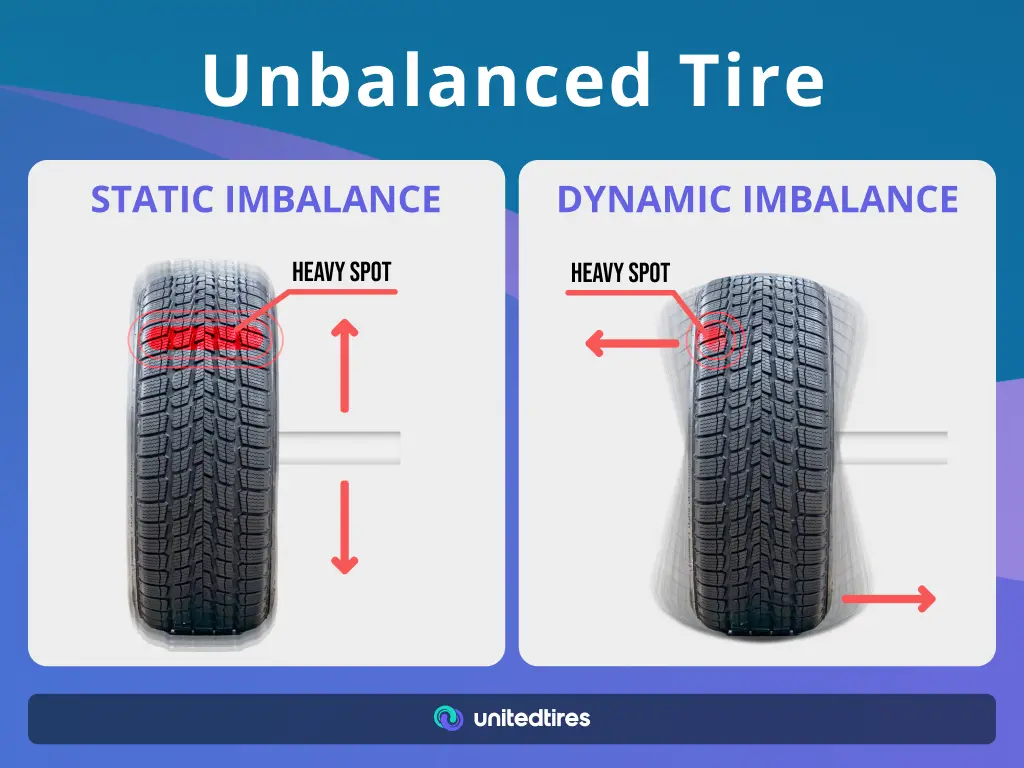
When tires are unbalanced, they can cause vibrations and bounce on the road. This bouncing creates uneven wear, or cupping, on the tire surface because certain sections make more contact with the road than others. Unbalanced tires can also lead to uneven weight distribution across the tire and wheel assemblies, resulting in vibrations and shaking while driving.
Tire imbalance
Tire imbalance is uneven weight distribution across the tire itself. Although manufacturers use sophisticated technology and professionals to create their tires, some spots on them may still be stiffer than others. These spots cause an imbalance when the tire is mounted.
Clip-on wheel weight
When a tire is out of balance and you drive at 45 mph or higher speeds, it causes vibration and bouncing. Eventually, your tires may start to cup in an irregular pattern. This type of wear is also called patch wear.
You can have friendly technicians balance your tires when mounting them on the vehicle by putting small weights opposite the stiff spots. However, as the tread wears, weight distribution changes, causing imbalance again. We recommend balancing your tires every 5,000 miles. You can learn more about tire balance from this article.
Tire runout
Tire runout is a flaw, meaning it’s no longer in a perfectly round shape. The term can be used when referring to the wheel or rim, too. Runout can be lateral (side-to-side imperfection and wobbling) or radial (the difference between the high spot and the average line or low spot of the rim). Some runouts are normal for tire-wheel assembly, but shaking and wobbling may occur if the radial reaches .060 inches or the lateral reaches .080 inches. If it’s your case, visit a mechanic ASAP as it can result in tire cupping.
3. Poor quality tires
Inexpensive tires of poor quality may be the reason for many issues, including back tire cupping. These tires don’t have the right compounds to provide you with the performance of a regular tire. They are thinner, have less tread, and may be severely imbalanced or misshapen.
In hotter states, such tires may dry out and chunk earlier, causing more serious problems than vibration or uneven wear. Make sure you consider all the important details when buying a new set of tires.
4. Worn suspension components
The suspension system plays a crucial role in maintaining proper tire contact with the road. Worn suspension parts, like shock absorbers or bushings, can allow excessive tire bounce, leading to cupping.
Shock absorbers and suspension are responsible for a smooth ride. If any of them wear out or bend, tires absorb the bumps. As the bouncing movement occurs due to partial absorber/suspension failure, some spots of the tire experience extra friction, which causes cupping.
It’s critical to check whether any of the parts are close to a total wear-out. However, according to a survey by one of the most influential shock manufacturers, only 21% of people find them important for ride control. Shock absorbers have a lifespan of 50,000-60,000 miles, while struts can work for 60,000-90,000 miles. So, to avoid back tire cupping and other issues, make sure you run a full diagnosis and replace them when the time comes.
According to the tests by Tenneco Automotive, the manufacturer of the original vehicle equipment, the MPV Renault Espace, had a 13.1 ft longer breaking distance on worn shocks compared to the same car fitted with new ones. In the tests on ice and snow, the Mercedes-Benz C250 Estate with ABS fitted with 50% worn shocks had a 5.2 ft longer emergency braking distance than the same vehicle equipped
NOTE: If you don’t find the cause of tire cupping in the shock absorbers or suspension, check other elements connecting the wheel to the vehicle. Ball joints, springs, bushings, or even wheel bearings may also be the cause.
5. Overloading the vehicle
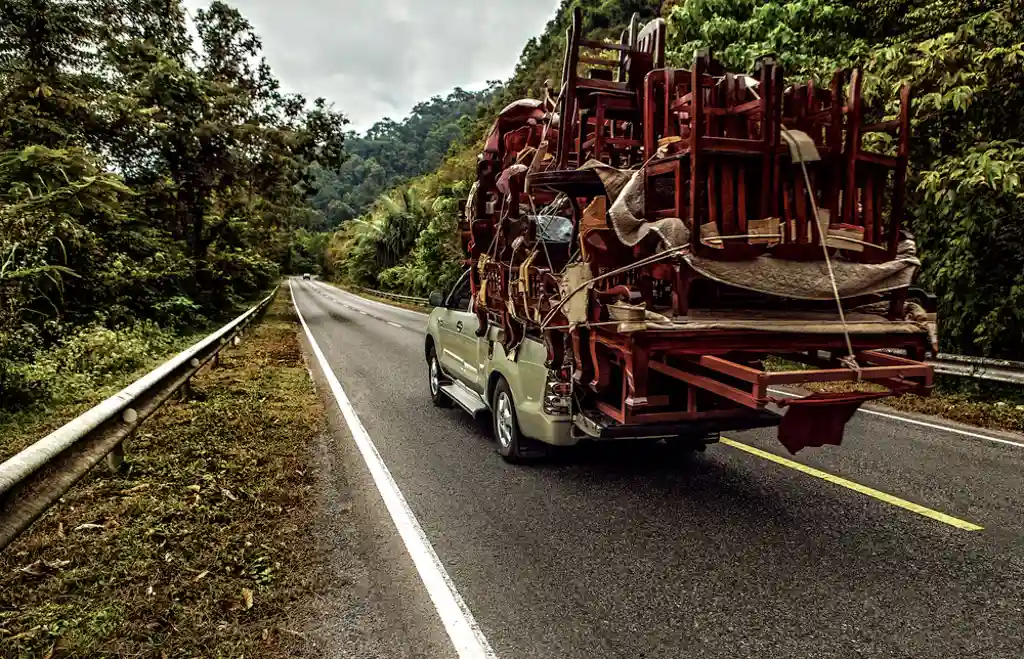
Carrying weight beyond a vehicle’s capacity can put extra stress on tires, leading to deformation and accelerated wear. This overstressing can result in cupping, especially on back wheels that often bear heavier loads.
When a vehicle is overloaded, the tires are subjected to excess weight beyond their designed load capacity. This additional weight puts more pressure on the tires, causing them to deflect and flex more than usual during driving.
The excessive deflection and flexing from overloading increase the amount of heat generated within the tire. The heat buildup can cause the tire’s internal structure to break down, resulting in its failure. Plus, overloading affects the tire’s contact with the road, leading to uneven wear and the development of cupped wear patterns.
Adhere to the Gross Vehicle Weight Rating (GVWR) and the Gross Axle Weight Rating (GAWR) specified by the vehicle’s manufacturer. This will play a significant role in preventing tire cupping and other potential damages caused by overloading. Exceeding GVWR and GAWR will cause premature tire wear and affect vehicle handling, steering, and braking performance.
Always check the tire-loading information sticker on the driver’s seat door or refer to the owner’s manual for the recommended load limits and loading recommendations!
Diagnosing rear tire cupping
How to visually inspect tires for signs of cupping?
Visually inspecting your tires is the first step in diagnosing tire cupping. Look for uneven wear points on the tread, especially high and low spots or dips, which indicate cupping. Run your hand over the tread to feel for these inconsistencies; sometimes, what you can’t see is easily felt.
Professional inspections
While a visual inspection can reveal cupped tires, understanding the underlying cause typically requires a professional inspection. Technicians use specialized equipment to assess the vehicle’s alignment and examine the suspension components for wear or damage that could contribute to cupping. Ensuring the wheels are properly aligned and the suspension is in good condition is a critical step in addressing tire cupping.
Is it possible to repair the back tire cupping?
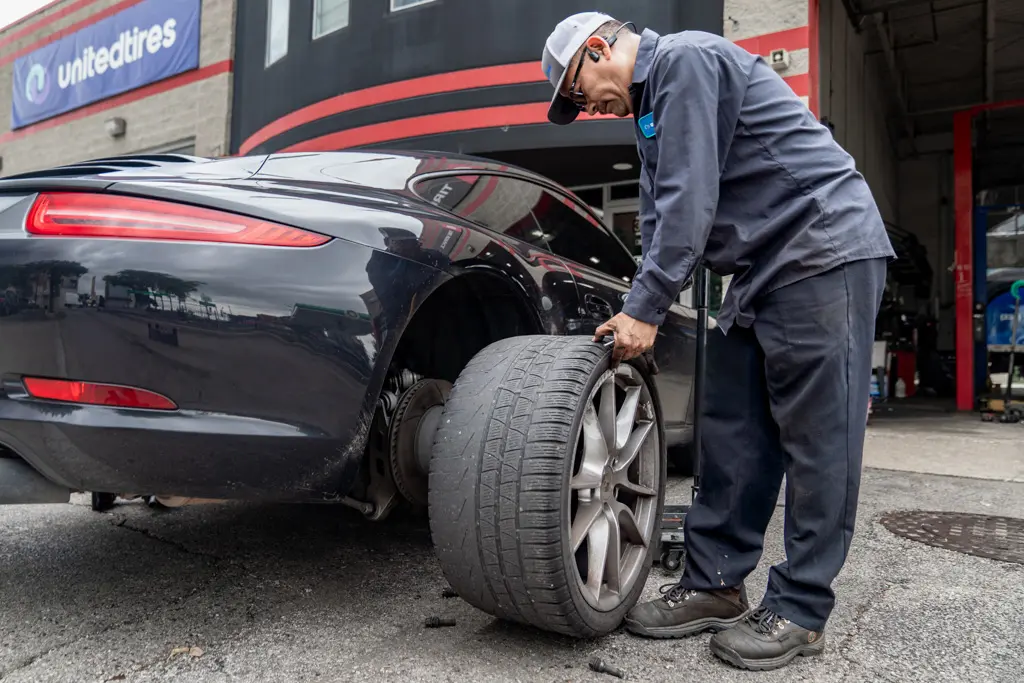
Repair options for suspension and wheel components
Addressing cupped tires often involves repairing underlying issues with suspension and wheel components. Besides shock absorbers and suspension check-ups, the mechanic will inspect these four aspects:
-
- Tire balancing: Correct tire balancing is critical for the weight to be evenly distributed within the tire, which can lead to cupping.
-
- Wheel alignment: Proper wheel alignment ensures that the vehicle’s back and front wheels are perpendicular to the road and parallel to each other, which is vital for preventing tire cupping.
-
- Checking and replacing wheel bearings: Bad axle and wheel bearings can cause handling and tire wear problems, necessitating a repair or replacement.
-
- Inspecting for damaged rims: Rims will be checked for damage or bends, which can affect tire wear.
You may also need to switch to wider tires and rims, as they have more contact patch area, making your wheel more stable. If your car manufacturer does not otherwise specify, consider buying unidirectional tires. Such tires will provide the best handling and traction.
IMPORTANT: Cupped tires should be replaced if the tread wear indicators are visible or the tread depth is at or below 2/32″, as they are considered bald and dangerous. Driving on cupped tires may result in poor vehicle handling and reduced traction and can be a safety hazard. Driving consequences of your back tires cupping
Driving while neglecting any present damage is dangerous, especially when the damage causes bouncing and vibration. The car becomes less stable and will not tolerate any excess load or speed as much as it normally would. The tire may wear out prematurely, exposing its steel cords and belts. As a result, it may go flat or blow out, which is difficult to drive out of.
Back tire cupping also damages suspension, so even if it wasn’t the initial cause, it may wear out and break sooner. These tires can lose traction due to continual bouncing motions, which may result in an accident. Braking and cornering may become almost impossible due to the damage, which also may cause a crash.
Ways to prevent back tire cupping
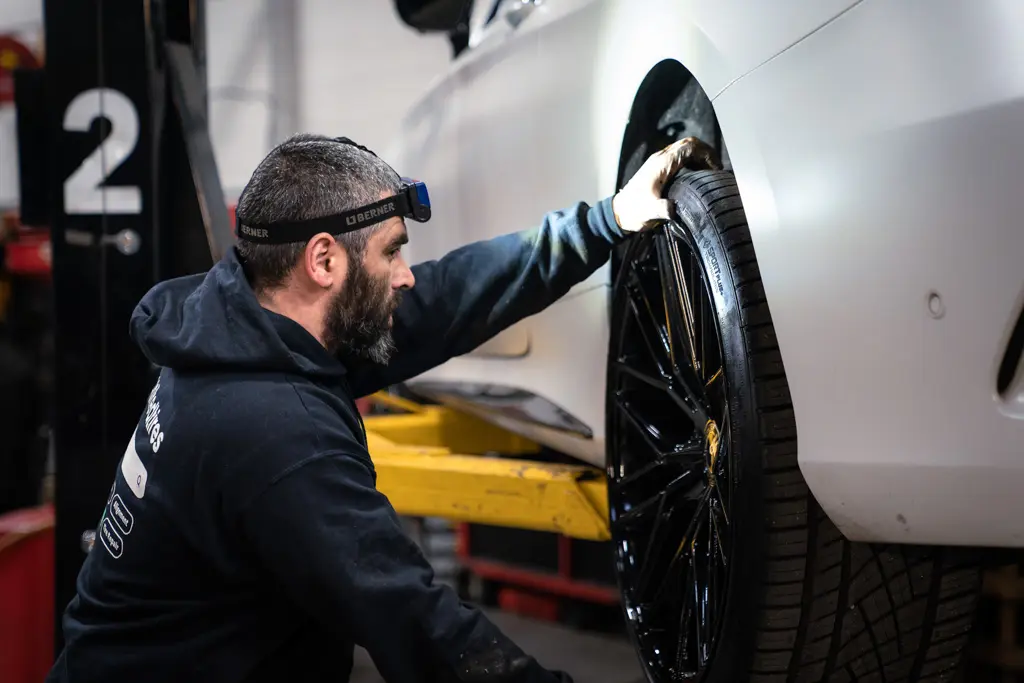
Regular maintenance
It’s critical that you check your tires, wheels, suspension, shock absorbers, etc., every several thousand miles. Under- and over-inflation can cause cupping and many other issues. Maintaining correct tire pressure can help prevent tire cupping by ensuring even tread wear. Also, if you notice any unusual tilt or vibration while driving, make sure to go to a mechanic to find and fix the issue.
Regularly check your tire pressure
Under- and over-inflation can cause cupping and many other issues. Make sure none of your tires lose air more than the others, and check their pressure every week.
Rotate and balance your tires
Rotation every 5,000-8,000 miles will prevent tire-related causes of back tire cupping, plus other types of uneven wear. Tire rotation should be done according to the manufacturer’s specifications.
Buy new tires in time
Find out how often you should buy new tires, and don’t wait until they become bald! Tires with a tread depth of 4/32’’ or less are more vulnerable to damage and can weaken suspension, leading to cupping.
Don’t forget about wheel alignment
Aligning the wheels according to the vehicle manufacturer’s specifications can help maintain even tread wear and improve vehicle handling, which is vital for preventing tire cupping.
Inspect your suspension
A visual inspection can reveal worn or damaged suspension parts like struts, bushings, and shock absorbers, which must be replaced if loose or damaged. Bad axle and wheel bearings can cause handling and tire wear problems, necessitating a repair or replacement. The condition of the springs, too, directly influences the curb riding height of a vehicle. Incorrect curb riding height due to sagged springs or worn components changes the operational geometry of the suspension, leading to tire wear patterns, including cupping. The vehicle’s suspension system maintains contact between the tires and the road surface.
Adjust your driving habits to reduce tire wear
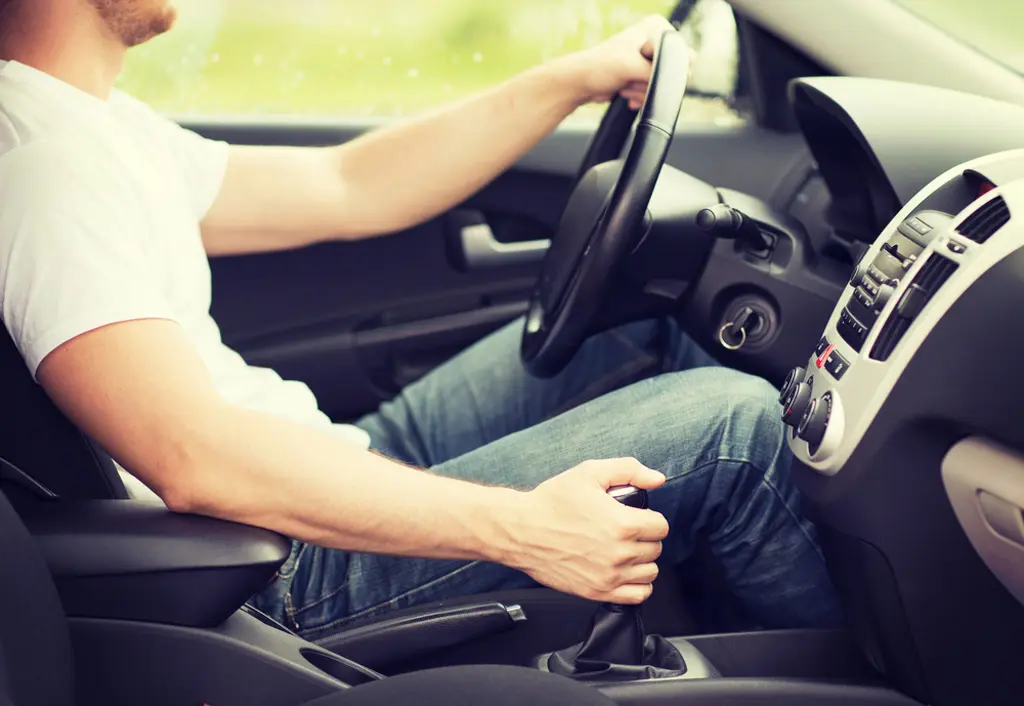
Avoid aggressive driving: rapid acceleration, hard braking, and high-speed cornering can accelerate tire wear of both rear and front tires. Try to practice mindful driving and be cautious on potholed or rough roads, which can reduce the strain and wear on tires. To prevent uneven tire wear, regularly check and maintain the tire pressure as the vehicle manufacturer recommends.
Addressing scalloped tires is critical—not just for a comfortable ride but also for you and your passengers’ safety! Detecting and correcting cupping in time prevents further damage and saves you cash and premature replacements.
We hope that this comprehensive guide sheds light on the tire scalloping problem and gives you a clear understanding of what to do if your back tires cup and how to prevent it.
Frequently Asked Questions
What causes cupping on my back tires?
Cupping, also known as scalloping, is caused by irregular wear on your back tires. It can be due to several factors, including worn or damaged suspension parts that prevent the tire from holding firm contact with the road. Improper wheel balance, misaligned wheels, and driving on bad shock absorbers or struts can also lead to cupping. Unbalanced tires can lead to uneven weight distribution across the tire and wheel assemblies, resulting in vibrations and shaking while driving. Furthermore, low-quality tires or those unsuitable for your vehicle can contribute to this problem.
How can I tell if my back tires are cupped?
Cupping is characterized by high and low spots on the surface of the tire tread. To check for cupping, run your hand over the tire’s tread to feel for dips and unevenness. Cupped tires may also produce a rumbling or growling noise while driving, especially at higher speeds.
Is it safe to drive on cupped back tires?
No! Driving on cupped tires is unsafe, as they affect your vehicle’s handling and grip on the road. They can lead to a loss of control, especially on wet surfaces. If the cupping is severe or if the tread depth is at or below 2/32 inches, the tires are no longer fit for use and should be replaced immediately.
Can cupped tires be repaired, or do they need to be replaced?
If the cupping is not severe and the tire’s overall condition is still good, it’s possible to smooth out the tires by driving. However, this is not recommended due to the potential danger, especially on wet roads. Tires with deep cupping or reaching the legal minimum tread depth should be replaced.
Can I continue driving on cupped back tires, or should they be replaced immediately?
Driving on cupped back tires is dangerous, as they can compromise your vehicle’s handling and reduce traction, making it unsafe. If the cupping is severe, you should replace the tires immediately. Even minor cupping can lead to further complications, so it’s best to consult with a tire specialist to determine the best course of action.
How can I prevent my back tires from cupping in the future?
To prevent back tire cupping, regularly check and maintain proper wheel alignment and tire balance. According to the manufacturer’s recommendations, regular tire rotations can also promote even tire wear. Additionally, periodically inspect the suspension system for worn details. Regular tire rotations, balance, alignment checks, and maintaining correct tire pressure can help prevent tire cupping.
Why is it important to promptly deal with back tire cupping?
Ignoring cupped tires can result in a rough ride, diminished braking performance, and even tire failure. If ignored, it leads to compromised handling and increased vibration, which in turn can cause further damage to the suspension system.
Share the Knowledge
